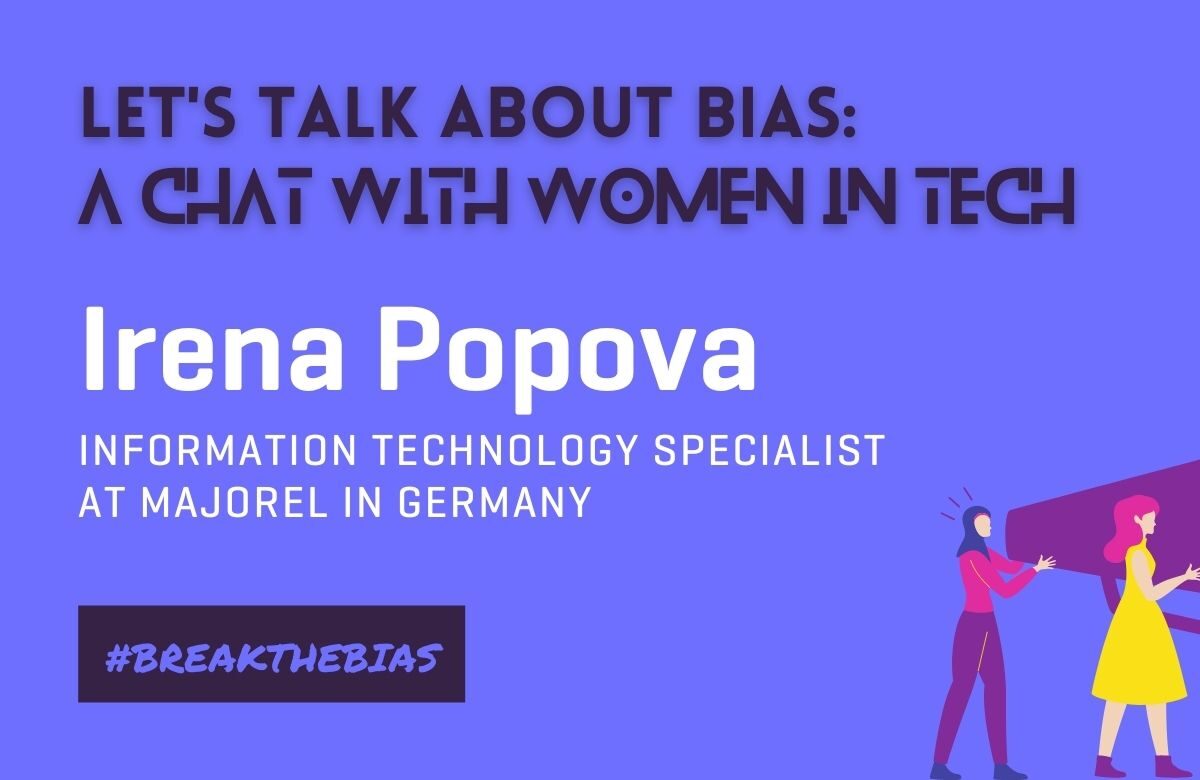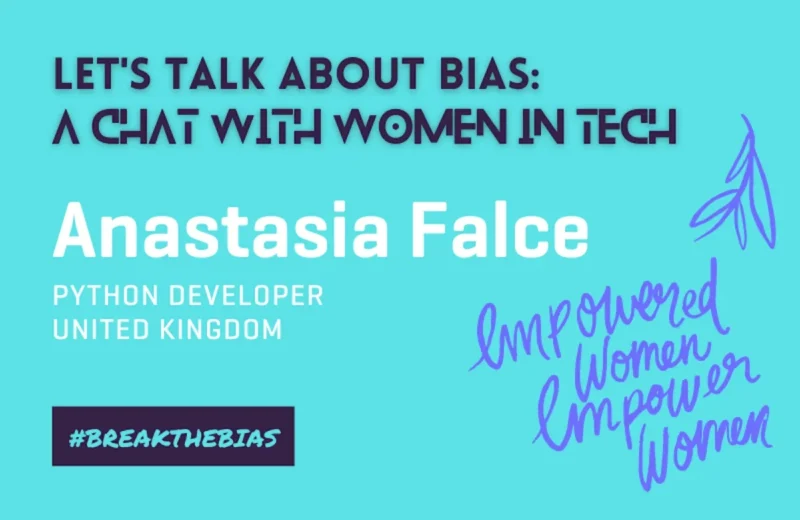This international women’s day this year, Parallel wanted to talk about how to foster more inclusive recruitment processes and best practices for hiring more women in tech, influencing employers and educating managers in how to create healthier workplaces for everyone.
Through a series of articles, we asked our employees, peers and network to about what they think can be done to support women in tech in the workplace and what employers can do to make a difference. Here, we talk to Irena Popova, an Information Technology Specialist who works at Majorel in Germany.
Before we start, could you tell us a bit about yourself?
I am currently an IT expert at Majorel. I work with a variety of clients from different industries to help them build better software. As we are a consultancy, I don’t only get to code. My role also requires me to advise clients on the best practices and help them identify the features that are the most valuable to their customers. I get to use different technology stacks depending on the projects, so I am not focused on a particular language or framework but more so on what is best suited to solve a particular problem. We work using Agile methodologies, so a typical day includes a stand-up meeting where we have regular showcases, retrospective sessions, sprint planning sessions, etc…
Why do you think that diversity and inclusion is s such an important topic for workplaces in the technology industry?
In an age where everyone is fighting for equal rights, equal opportunities, and equal salaries, having an individual pass up on a career in a certain field because it is considered a “man’s job” is no longer acceptable. Besides in Nature there is diversity – there is similarity in diversity, and everything is connected.
Diversity matters in the tech industry because businesses with diverse teams will create more diverse thought processes. Diversity will facilitate varied approaches to problem-solving as there are more collective experiences to draw from. As such, diversity will aid a business in its ability to perform better than those that are comprised of individuals from a similar background.
"In an age where everyone is fighting for equal rights, equal opportunities, and equal salaries, having an individual pass up on a career in a certain field because it is considered a “man’s job” is no longer acceptable."
Irena Popova Majorel, Germany`
What’s a common misconception people have about female developers?
There are women who are more social and women who are less social. Even though we are working with tech, we are ultimately working with people and for people. So, whether you like to be social or not, there is a job for you in tech. You only need to know how to code to work in tech.
Were you ever asked unfair questions during an interview process?
Yes – I was asked questions regarding my age, my university degree in tech, disability and marital status, my nationality, etc. I actually found some of these questions quite discriminating.
What can we do to boost gender diversity in tech?
Once you have attracted more women to your organization with interdisciplinary roles, offer them development opportunities to move into roles that have a stronger “dry-coding” nature.
What practical things should employers be doing to support women, and combat bias, to create more inclusive environments?
There are a number of positive steps that employers can take to make a difference. For example:
1. The first step is education.
If your employees aren’t aware that there’s an issue, they won’t be inclined to change. Employers should ensure their organization knows what gender bias looks like (whether it be overt or subtle) and how employees can avoid it entering the workplace. Showcasing some examples and going through exercises can help demonstrate these issues. Also make it clear that gender bias works both ways, not just towards one gender. By educating and defining what gender bias looks like, workers can be better equipped to identify bias when they see it or hear it.
2. Evaluate and Standardize Pay.
We have all heard about the gender pay gap. This purports that women are paid less than men based on the same amount of work. This might be the case in the company, but it also might not be. It’s best to evaluate your current pay structure to ensure that you’re aware of any discrepancies that might fall in line with this national average. People should be paid the same amount for the same job and women should be encouraged to go after raises just as much as men. By evaluating compensation trends, managers can be aware of any patterns, inconsistencies or obvious biases that might exist. By acknowledging any issues, employers can take steps to make their compensation system more progressive and reflective of equal pay for equal work.
3. Review Your Recruiting Process.
Specific things like the wording of a job description can affect the kinds of people who apply and get hired. While selecting certain words to convey a role or responsibility is often done with little intent towards gender, certain words can have connotations in the world. It’s best to review job adverts with an inquisitive eye before you make them live.







